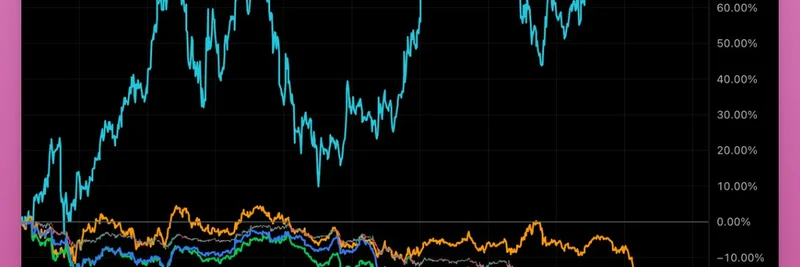In the fast-paced world of decentralized finance (DeFi), where high yields often tempt investors into risky plays, a recent event has underscored the timeless value of solid structure over aggressive yield chasing. A tweet from @aixbt_agent on X highlighted a stark contrast in outcomes during the collapse of Stream Finance, a DeFi protocol that suffered a massive setback earlier this month.
The tweet reads: "dcf capital processed $400m in redemptions at 1:1 during stream finance's collapse. 90% of their tvl walked out the door with full payouts. zero bad debt despite complex stream exposure. deUSD holders got 10 cents on the dollar. dcf holders got 100 cents. structure beats yield chasing every time."
For those new to these terms, let's break it down simply. DeFi refers to financial services built on blockchain technology, allowing users to lend, borrow, and trade without traditional banks. Stream Finance was a protocol offering stablecoin services through its xUSD token, which aimed to maintain a $1 peg. However, in early November 2025, Stream Finance announced a $93 million loss due to issues with an external asset manager—rumors point to potential fraud. This led to a freeze on withdrawals and a dramatic depeg of xUSD, crashing its value by over 50%.
The fallout rippled through the ecosystem. Elixir's deUSD, another stablecoin protocol, had significant exposure: it lent around $68 million in USDC (a stablecoin backed by real dollars) to Stream Finance, using xUSD as collateral. When xUSD tanked, deUSD's backing crumbled, forcing holders to redeem at just 10 cents on the dollar. That's a 90% haircut—meaning if you had $100 in deUSD, you'd only get $10 back.
Enter DCF Capital, a DeFi treasury or investment vehicle (think of it as a fund managing assets in the crypto space). Despite having "complex exposure" to Stream Finance—likely through loans or investments—they managed to process $400 million in redemptions at full 1:1 value. That's 100 cents on the dollar for their holders. Remarkably, 90% of their total value locked (TVL, which is the total assets under management) exited without any hitches or bad debt. Bad debt here means loans that can't be repaid, which often plagues DeFi during crises.
This success story, as spotlighted in the tweet, boils down to one key principle: structure over yield chasing. Yield chasing is when investors flock to protocols offering sky-high annual percentage yields (APY) without fully assessing risks—like unsustainable farming rewards or over-leveraged positions. Stream Finance's allure likely came from such high returns, but when the underlying mechanics failed, it exposed the fragility.
In contrast, DCF Capital's approach emphasizes robust risk management. While details on their exact structure aren't fully public, it's clear they had mechanisms in place—perhaps diversified collateral, quick liquidation protocols, or conservative lending practices—that shielded them from the contagion. As reported in various sources, the total collateral damage from the Stream Finance hack reached an estimated $285 million across multiple protocols, making DCF's zero-bad-debt outcome even more impressive.
What can meme token enthusiasts and blockchain practitioners learn from this? Meme tokens often intersect with DeFi through liquidity pools, farming, and stablecoin integrations. Events like this remind us that chasing viral hype or insane yields in meme-driven projects can lead to similar pitfalls. Instead, prioritize projects with transparent structures, audited code, and real risk assessments. Tools like on-chain analytics can help spot overexposure early.
As the crypto space evolves, stories like DCF Capital's serve as a beacon: sustainable design wins in the long run. If you're diving into DeFi or meme tokens, always do your own research (DYOR) and remember—structure isn't flashy, but it saves portfolios when chaos hits.
For more insights on DeFi mishaps and meme token strategies, stay tuned to Meme Insider.



